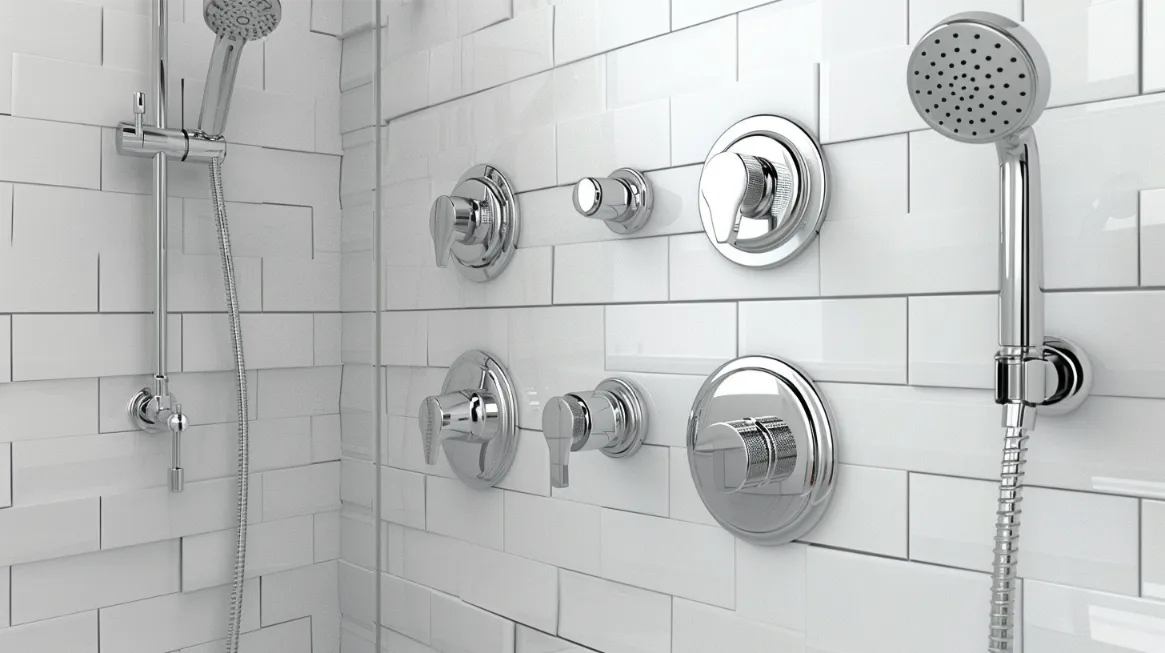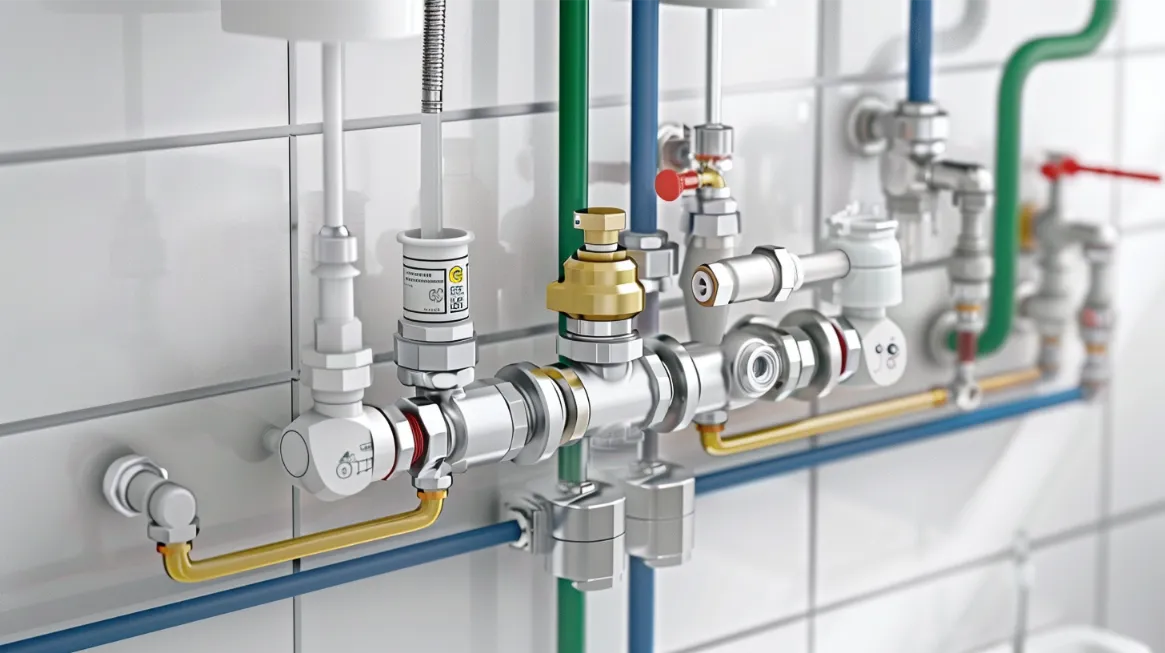Regarding plunge routers versus fixed-base routers, the key differences lie in their functionality and importance. Plunge routers allow you to control bit depth by plunging, making them ideal for tasks like milling dados and creating mortises. On the other hand, fixed-base routers lock the bit at a specific depth for consistent cuts, making them great for trimming laminate and crafting precise mortises.
Understanding these differences is pivotal in selecting the right tool for your woodworking needs, especially considering factors such as cost and user experience. Exploring these variations further can help you make an informed decision tailored to your woodworking projects.
Key Takeaways
- Plunge routers offer adjustable bit depth by plunging for versatile cuts.
- Fixed-base routers maintain a set depth for consistent routing tasks.
- Plunge routers excel in precision for inlay work and stop dado cuts.
- Fixed-base routers provide stable control and are ideal for beginners and basic tasks.
- Consider budget and required features when choosing between plunge and fixed-base routers.
Functionality of Plunge Router Vs Fixed-Base
When choosing between a plunge router and a fixed-base router, consider their functionality to determine which tool best suits your woodworking needs. A plunge router lets you easily control the bit’s depth by plunging it into the material. This feature is handy for tasks like milling dados and mortises and creating intricate edge profiles. On the other hand, a fixed-base router locks the bit at a specific depth, ensuring consistent cuts without any unwanted compression or extension. Fixed-base routers are great for trimming laminate, routing dados, and crafting precise mortises.
RELATED: Best Wood Routers
In woodworking, the versatility of a plunge router shines when you need to work from above or when routing the middle of workpieces. This flexibility can make it a go-to tool for various projects requiring more control and precision. Conversely, the fixed-base router excels in applications where a specific and consistent depth is critical for the desired outcome. Both routers have their strengths, so understanding the differences in functionality is key to choosing the right tool for the job.
Versatility in Woodworking Applications
In woodworking applications, the versatility of plunge routers truly shines through their ability to offer presetting multiple depths for accurate adjustments. Unlike fixed-base routers, plunge routers allow you to set the depth before starting the cut, making them ideal for tasks like inlay work that require precise depth cuts without angling into the material.
Plunge routers support various bases such as Plunge, Fixed, and Offset, easily catering to different routing needs. These routers provide a safety benefit as the bit retracts when lifting off the workpiece, minimizing accidents and ensuring a smoother operation.
Tasks such as making stopped dado and mortise cuts, precise depth adjustments, inlay work, and edge routing are well-suited for plunge routers due to their versatility and ease of use. Whether you’re a beginner or a seasoned woodworker, the flexibility and precision offered by plunge routers make them a valuable tool in your woodworking arsenal.
Precision and Control Variances
The choice between plunge and fixed-base routers hinges on the precision and control variances each type offers for precise routing tasks requiring exact depth adjustments and controlled movements.
Plunge routers excel in providing precise depth adjustments, allowing for accurate cuts with utmost accuracy. Their ability to make controlled vertical movements during operation makes them ideal for tasks like inlay work and creating stopped dado cuts.
On the other hand, fixed-base routers offer stable control, ensuring consistency in routing tasks such as edgework and achieving clean, visible finished edges. The accuracy of plunge routers in tasks requiring specific depths is unmatched, while fixed-base routers provide a stable platform for intricate woodworking projects.
Understanding these differences in precision and control variances is vital in selecting the right tool for your woodworking needs, whether you prioritize accurate depth adjustments or stable control for various routing tasks.
Cost Comparison and Considerations
Considering the cost discrepancies between plunge and fixed-base routers is essential when choosing the right tool for your woodworking projects. Plunge routers generally have a higher price tag than fixed-base routers due to their added features and versatility. On the other hand, fixed-base routers are more affordable and cost-effective for basic woodworking tasks.
The price difference between these two types of routers can vary from $50 to $200, depending on the brand and specifications. When deciding between a plunge router and a fixed-base router, it’s important to consider your budget and the specific features you require for your woodworking projects. If cost is a significant factor, opting for a fixed-base router might be a practical choice, especially if you work within a tight budget.
User Experience and Skill Level Impact
When using plunge routers, your user experience and skill level greatly impact how effectively you can adjust cutting depths and handle the tool during woodworking tasks.
If you’re new to woodworking, fixed-base routers might seem more user-friendly due to their simplicity and stability. Beginners often find it easier to work with fixed-base routers as they offer straightforward operations and are generally easier to control.
On the other hand, experienced woodworkers tend to prefer plunge routers for their versatility. These routers allow for more intricate cuts and are suitable for a wider range of woodworking tasks.
Your skill level influences your choice between plunge and fixed-base routers, especially when considering project complexity and the level of precision required. As you gain more experience and confidence in woodworking, you may find that plunge routers offer you the flexibility and precision needed for more challenging projects.
Real-World Applications
As a seasoned woodworker, I’ve had the opportunity to work with plunge routers and fixed-base routers on various projects. Each type of router has its strengths and ideal use cases, and understanding when to use each can greatly enhance your work’s quality and efficiency.
Case studies of projects that benefit from using a plunge router
Creating custom inlays is one of my favorite projects showcasing a plunge router’s versatility. I recently built a beautiful walnut coffee table with an intricate compass rose inlay made from maple and cherry. Using a plunge router with a guide bushing and a template, I could precisely cut the recess for the inlay in the center of the tabletop. The plunge mechanism allowed me to lower the bit into the workpiece smoothly and create a consistent depth for the inlay cavity.
Another project where a plunge router proved invaluable was when I was building a set of custom cabinets for a client’s home office. The design called for adjustable shelving, so I used my plunge router to cut evenly spaced dadoes along the sides of the cabinet carcasses. The ability to preset the depth of cut and plunge the router at precise intervals ensured that all the dadoes were perfectly aligned, resulting in level, sturdy shelves.
Examples of tasks that are best suited for a fixed-base router
While plunge routers excel at certain tasks, there are many applications where a fixed-base router is the better choice. One such example is edge profiling. I recently built a set of oak-raised panel doors for a kitchen renovation project. Using a fixed-base router with a specialized rail and stile bit set, I could create perfectly matched profiles on the edges of the door frames and panels. The fixed-base router provided the stability and precision needed for this intricate task, ensuring a seamless, professional look.
Another instance where a fixed-base router shines is when creating decorative edges on tabletops and shelves. I built a series of floating shelves for a client’s living room, and to give them a polished look, I used my fixed-base router with a chamfer bit to ease the edges. The fixed base allowed me to maintain consistent pressure and control as I guided the router along the edges, resulting in a smooth, even chamfer on all sides.
Showcase of creative and advanced routing techniques
One of the most satisfying aspects of woodworking is finding creative ways to use your tools to achieve unique and stunning results. With routers, the possibilities are nearly endless. One technique I particularly enjoy is creating 3D textured surfaces using a combination of different router bits and templates.
For a recent art piece, I used a plunge router with a dish carving bit to create a series of overlapping concave depressions in a piece of walnut. By varying the depth and position of each plunge cut, I made an organic, rippled texture that caught the light beautifully. I then used a fixed-base router with a V-groove bit to carve a series of lines radiating from the center, adding another layer of visual interest to the piece.
Another advanced technique I’ve experimented with is using a router to create interlocking, puzzle-like joinery. I cut precise, interlocking shapes in two pieces of contrasting wood by designing a series of templates and using a plunge router with guide bushings. The result was a visually striking box that appeared to be an impossible object with no visible means of assembly.
Frequently Asked Questions
What Is the Difference Between a Plunge and a Fixed Base Router?
When deciding between a plunge and fixed-base router, remember that the plunge router allows for depth adjustments mid-cut, while the fixed-base router keeps the bit at a set depth. Consider your project needs for the best choice.
What Is the Advantage of a Plunge Router?
When using a plunge router, you can adjust cutting depths precisely as you work, making it perfect for tasks like inlay work and accurate cuts at different levels. The retracting bit also enhances safety.
What Is the Difference Between a Plunge Router and a Trim Router?
When comparing a plunge router and a trim router, remember that plunge routers offer precise depth adjustments for tasks like inlay work, while trim routers are better suited for light trimming jobs. Consider your project needs carefully.
Can I Plunge Cut With a Fixed Base Router?
You can plunge cut with a fixed base router, but it’s not recommended. Fixed base routers, like plunge routers, lack depth adjustment on the go, leading to inaccurate and unsafe cuts. For precise and controlled depth adjustments, opt for a plunge router.
Conclusion
To sum up, when contrasting plunge routers to fixed-base routers, it’s crucial to consider factors such as functionality, versatility, precision, cost, and user experience.
Each type has unique advantages and drawbacks, so selecting the right one depends on your woodworking needs and skill level.
By understanding the key disparities between the two, you can make an informed decision that will enhance your woodworking projects.










